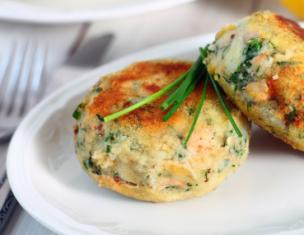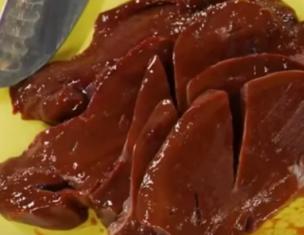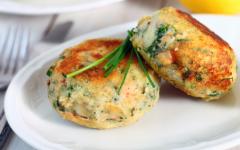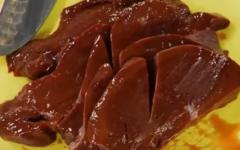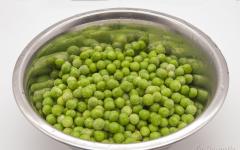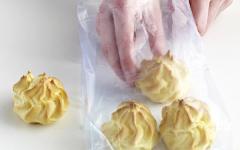What Are Spots?
The answer to this question is not so simple.
Not only in everyday life, but also in cooking, and even in the scientific literature, spices, spices, seasonings and simply fragrant substances used for the aromatization of certain food products are confused. Meanwhile, each of these terms refers only to one, a certain group of substances endowed with completely different properties from other groups.
Spices are a product of purely vegetable origin. Moreover, plants that give spices belong to more than 30 different botanical families.
However, all the spices are united primarily by the role they play in cooking, and this is their true value.
Unfortunately, the issue of spices has been little developed. Hence, in the culinary practice, there is a confusion between spices, seasonings and flavors, which leads both to the restriction of the use of spices, and partly to their incorrect application.
For many millennia, spices faithfully serve a man. They not only improve our food, but also take a worthy place in the arsenal of medicines.
But in order to use spices properly, with knowledge and use, you need to know their essence and properties well.
To find out what properties spices possess, let us first turn to the names given to them by different peoples. Often the names themselves contain characteristics of spices.
In ancient Greece, spices were called "aromatio", which meant "fragrant, fragrant herbs." In ancient Rome spices were called "salsu" - caustic, sharp, tasty. The same meaning has the Latin word "scitamente" - the name of a family of spicy plants. It means "a delicious, selective, delicious food." This applied to spicy plants of the tropics - cardamom, ginger, galangta, etc.
In medieval, late Latin, we find the word "species" - something that inspires respect, is prominent, brilliant and beautiful. This name is not associated with the properties of spices, but rather with the high evaluation that they received in the Middle Ages in Europe.
In most countries of Western and Southern Europe, the national, local names of spices have come from this medieval Latin notation, but in modern languages the meaning of this word varies somewhat; so, the Italians "spezie" - special, special, individual; the French "epice" - sharp, piquant; the English "spices" - sharp; the Dutch "specezig" - a special, rare. Thus, in Western and Southern Europe, the modern names of spices mark all of their properties, which collectively marked the Latin names, that is, on the one hand, the sharpness, spiciness of spices, on the other - their rarity, feature, uniqueness. At the same time, the meaning of "tasty, selective" disappeared.
The spices in the countries of Central, Northern and Eastern Europe are somewhat different in Germanic, Slavic and Finno-Ugric languages. In German spices are called "Gewurze", which means "roots". The same means Czech "koreni", Polish "korenny", Latvian "virzes", Estonian "vurts". But in Estonia there is another name for spices - "maitseained", that is, delicious, giving a taste. The Lithuanian word "prieskonis" or Latvian "sivs" (tasty) has the same meaning. In these cases, the quality of spices is noted.
And in Scandinavian languages spices are called "kryddor", which means "seasoning, decorating the taste."
Thus, in the Germanic and Slavic names of spices, the spices, the roots and roots of plants, are noted in the first place, in spices, and in the more ancient languages of Eastern Europe, the names of spices retained an indication of their characteristic food characteristics-flavor, smack.
In Russian, the word "spicy", as Dal says, means "sharp, fragrant, pleasant to the taste" as opposed to "fresh" and "cloying". The very word "spice" (and "spicy") occurs in the Russian language from the word "pepper", that is, from the first spice that has become known to the Russian (spicy, peppery, that is, peppery). Hence the word "gingerbread" - filled with spices; 7-8 kinds of spices were put in gingerbread.
Are all these estimates of spice contradictory? Of course not. The fact is that each people noted for themselves those properties or qualities of spices that seemed more interesting to him, which often depended on specific historical conditions, on the spices he used. Almost all the people note the characteristic aroma of spices and the varying degree of burning ("sharpness", as sometimes it is sometimes called). As for the taste, it is not a property of the spices themselves, but arises only in combination with the main food. That is why the peoples of the East, where there is an ancient culture of consumption of spices, never confuse the taste with the burning sensation inherent in spices, unlike seasonings and aromatic substances.
Seasonings give food only a certain taste: salty, sour, sweet, bitter and their combinations - sweet and sour, bitter-salty, etc. Aromatic substances are able to give food only aroma, for example, rose, cocoa, ylang-ylang, jasmine. The spices inform the fragrance in combination with a characteristic aftertaste that is noticeable only in food, especially when heated. This combination creates a kind of fragrant, not so much fragrant, as a stuffy, dense aroma, which we call spicy and which in most cases is accompanied by a slight burning sensation felt by our tongue, palate, mucous membrane of the mouth.
What else distinguishes spices from seasonings and other substances with which food is cured, and what is the essence of spices?
Until now, we have talked about the properties determined organoleptically, that is, about the differences, to a certain extent fixed subjectively by our senses. However, there are also objective signs that distinguish spices from seasonings and aromatic substances.
First, spices are not used in significant amounts, like seasonings (for example, barberry, plum, quince, garnet), and they can not serve as independent dishes, as, for example, tomato paste or bulgarian pepper, which you can eat with bread. Spices are used only as additives necessary for giving food a certain accent (sometimes decisive). Their use can be compared with small additions of rare metals to steel, resulting in various alloyed steels with different properties. Attempts to increase the dose (amount) of spices, in other words, go beyond the permissible limits, lead to a sharp change in their qualitative effect on food, to the appearance, instead of a pleasant desired flavor, of a sharp, unpleasant bitterness.
This feature of spices determines their place in cooking, unlike seasonings and flavorings. Spices can be used only during preparation and in extremely small doses.
In addition, spices have the ability to suppress the growth and development of bacteria (bactericidal), mainly rotting bacteria, and thereby contribute to a longer preservation of food (canning). At the same time, the vast majority of spices have the ability to activate the withdrawal of various kinds of slags from the body, purify it of mechanical and biological clogging, and also serve as catalysts for a number of enzymatic processes. Therefore, most spices are used, and especially in the past have been used, in medicine as medicinal substances. In these cases, their concentration increases and the duration of use increases compared with the use in cooking. To the above, we can add that the use of spices together with food acts on the physiological and psychological mood of our body, promotes more complete digestion of food, stimulates the purifying, metabolic and protective functions of the body.
So, we should not mix spices with seasonings and with such additives to food, which cause a change in its taste, for example, salt, sugar, vinegar (in our culinary practice they are usually referred to as spices). We should not identify spices with fragrances that do not possess bactericidal and other special properties and whose range of application is more limited (mainly to sweet dishes).
On the basis of all of the above, let's try to answer the question what spices are. Spices - a variety of parts of plants that have a specific stable aroma (odor), varying degrees of stinging and, in part, flavor. Being used in very small doses (as additives to food), they are able to give any food product these properties and thereby change its taste in the direction desired for us, and also to increase the preservation (preservation) of food products and promote the best digestion by their body , stimulating not only the digestive process, but also other functions of the body.
Here are just some of the great spices - medicines that can be found right here in our kitchen cabinets. Nature is unique, and not only Indian spices, but also dill, parsley, cumin, are also excellent therapeutic measures. Our health is just around the corner, it's just a matter of knowledge, and we can be healthier without drugs, or at least reduce their use.
Do not forget - it is always easier to prevent the disease than to treat it. Properly selected spices can not only change the taste of ordinary dishes, but often also have health benefits. Using certain spices in everyday life can help prevent many diseases and alleviate the symptoms. Medicinal herbs have been evaluated since ancient times throughout the world.
. V.V. Pohlebkin. 2005.
What is "WHAT IS SPIRITS?" in other dictionaries:
This question may seem far-fetched, because the answer to it seems to be quite clear: seasonings are what season, flavor, ennoble food, mix it with something that improves its overall taste. Ordinary dictionaries are being interpreted ... ...
Turmeric is a plant of ginger, which naturally grows in India, is grown in Japan, China, Cambodia, Sri Lanka and other countries with a good climate. The food is consumed by the turmeric rootstocks, which are dried and crushed into powder. In addition to this spice, the cuisine of many eastern countries is unthinkable. Meat, fish, vegetables, rice dishes are served in cyber-reeds. Turmeric powder bright yellow with yellow curcumin. It is with turmeric that all the essential varieties of turmeric are related. Curcumin slows the process of failure and can therefore be used as a natural preservative, especially in countries with high temperatures.
SECRETS OF GOOD KITCHEN Chapter 1. SERIOUS, EXPLAINING: TO WHOM THE DOOR IS OPENED TO THE POVARIAN CRAFT AND WHY THIS CRAFT IS A COMPLEX, DIFFICULT ART Chapter 2. AZS, BUT NOT FAR ALREADY Five Rules, Five Secrets of Bakery Chapter 3. A Dough And Its ... ... Great Encyclopedia of Culinary Arts
What is important to know the cook about the products first? A matter of primary importance is the determination of the freshness of the product, its quality of fatness, age, size, maturity. The answers to these questions often depend on the decision, which ... Great Encyclopedia of Culinary Arts
Curcumin possesses strong antioxidant, antiseptic properties. In ancient India, turmeric paste was used for dermatitis, branches, bacon for insects. In India, a baby cough was treated with puree puree with cypress milk. However, the main interest of doctors and scientists in different countries is the ability of turmeric to stop the spread of cancer cells - it is true that the studies are still at the initial stages.
Turmeric has a positive effect on digestion - it promotes the secretion of bile, helps to quickly digest fats. It was noticed that people who love fatty dumplings in turmeric, the weight grows a little less than others. Curcuma is best absorbed by the body when used in conjunction with black pepper - a traditional mixture of curry spices.
You can eat the same food for years, using a standard set of seasonings: pepper, salt, bay leaves, ketchup and mayonnaise. You can not know what turmeric and saffron are, do not distinguish between the taste of glutamate sodium from citric acid or cloves from cardamom. But those who have at least once learned how varied the taste and smell of food from the use of various spices and spices can become, will not be able to refuse them in the future.
Paprika - for those who love spicy. The most valuable chili, also called chili pepper. The content of capsicine in the product causes both acute taste and valuable properties. Pepper has antioxidant, anti-inflammatory, antibacterial properties, improves blood circulation and helps prevent cancer.
Parsley is not only a plant used to decorate a dish, its medicinal properties will not be hidden by traditional or modern medicine. Crumpled leaf will help prevent bad breath, and the infusion or decoction stimulates the removal of kidney stones, improves urine output, positively affects urinary tract infections, can help slow the development of atherosclerosis.
Terminology
It is widely believed that seasonings, spices and spices are synonymous with food additives. This is not entirely true, although there are several opinions on these terms.
Condiments. This word can be called everything that is added to food to change the taste. For example, ketchup, sauce, mayonnaise, vinegar or seasoning "Mivina, 7 vegetables." Another example: Ushakov's dictionary says that sour cream is used as a seasoning in borsch. To avoid confusion with spices, seasonings are called dietary supplements, consisting of several components.
Cinnamon is a tropical tree bark. There are many kinds of cinnamon, but Chinese and cayenne cinnamon are most often used as spices. Ceylon cinnamon has a more pleasant aroma and taste, and also more expensive. In traditional Chinese medicine, cinnamon is used to improve digestion, combat flatulence, to relieve pain during menstruation. It is believed that cinnamon improves blood circulation and provides energy. This effect is especially pronounced when using cinnamon with honey.
According to some studies, cinnamon reduces cholesterol, helps prevent heart disease, strengthens immunity, helps to avoid bad breath and relieves pain in joints. Cinnamon can be served with oriental coffee or tea, various purees or bakery products. It is important not to overdose cinnamon - a large number of it can damage the liver. The optimal dose for reducing cholesterol is half a teaspoon of cinnamon per day.
Spice. These are single-component additives that change the taste, smell or consistency of the dish. Spices include salt, citric acid, sodium glutamate and the like. To spices not include fragrances or colorants that alter only smell or color of the dish.
Spices - it is exclusively vegetable additives, having a spicy taste and aroma. Can consist of fresh or dried parts of plants. Spices, unlike seasonings, can not be used as an independent dish. They can be local (dill, parsley, onion) or classic (coriander, saffron, bay leaf).
It has pizza, meat and fish dishes. Redness has anti-inflammatory, antiseptic effect, relieves pain, improves wound healing, improves digestion, is suitable for respiratory diseases, especially with sore throats. Garlic is an indifferent, non-sticking herb. Some adore it, others hate it, but none of the medicinal properties can be tolerated. Since ancient times, garlic is used to treat cold diseases. It has antibacterial, antiviral, antifungal effects, strengthens immunity and destroys intestinal parasites.
Of the variety of food additives, it is necessary to consider spices in more detail. Main types of spices:
Features? Strong pleasant aroma, rich bitter-tart taste.
Where is it grown? Sri Lanka, Malaysia, Madagascar, Indonesia, Zanzibar.
Most often - dried kidneys, less often - in the ground form.
How to use? A ground clove in a small amount is added to spicy cider or apple cakes, whole or ground - in Fig. Whole dried clove buds are an ideal spice for roasting or frying pork.
According to some studies, garlic reduces cholesterol and helps prevent heart disease. Today it is too expensive for saffron to paint or bathe in textiles, but without this spice it is unthinkable to have French fries, Milanese mulberry, Spanish pebbles and many dishes of Indian and Middle Eastern cuisine.
Fairly saffron road to Europe. Saffron comes from Greece and south-west Asia, and the word "saffron" is of Persian origin. Saffron - a vase with knitted flowers, that is, thin, fragrant orange threads. Each ring has only three cans. In Assyria, saffron was used as a spice. It was believed that he heals hundreds of diseases.
 Features? Pleasant aroma, sweet taste, high content of vitamins.
Features? Pleasant aroma, sweet taste, high content of vitamins.
Where is it grown? Mediterranean, Middle East, India.
In what form is it distributed? Dried seeds or in a ground form. Ground coriander loses its smell much faster.
In Persia the saffron threads were tied to tissues, sacrificed to the gods, and the tea of this spice cured the sorrow. Traditions of saffron from Persia arrived in Greece. Here, as in Egypt, saffron was a medicine and an ingredient of spirits. After the collapse of the Roman Empire, all Europe learned about saffron. He still believed that he had strong healing powers. Because of the high demand for this spice, the Saffron War even arose. The pirates seized the saffron boats and seized a large number of spices.
By the way, if you accumulate a lot of money, you always have the opportunity to use it. Even then the saffron was forged, and the punishment for such a deception was ruthless - he immediately condemned the Miriam. Today, saffron is grown in Greece, Italy, Spain, but even by 90%. he is brought up by Iran.
How to use? Coriander is perfectly combined with almost any food. In cooking it is used for vitaminization and flavoring meat and fish products, sausages, sausages, some confectionery products.
 Features? Antioxidant properties, pleasant smell.
Features? Antioxidant properties, pleasant smell.
Saffron is a spice handmade. Saffron is the most expensive spice in the world. In the end, only one hook-shaped ring consists of three aromatic cans. In addition, each pocket ring is manually selected, the three most important ring threads are also manually removed. Stuffed jars are dried; While they are hot and dry, they change color - the bright orange color turns into a rich red color.
Plantations of saffron crocus are usually small and belong to the same family. This is a strong aromatic spice with special dyeing properties - only two saffron threads are colored with 2 liters of water. In the production of food, this expensive spice needs to be used very little, since its higher quantity will make it bitter for the dish. Saffron contains rice, pasta, seafood and meat dishes. He is also very popular this season with pancakes, desserts, even ice. Saffron draws some drinks, liqueurs, hard cheeses.
Where is it grown? Seychelles, Sri Lanka.
In what form is it distributed? Most often in the ground state. Less often - in the form of whole dried sticks (pieces of bark).
How to use? Cinnamon is added mainly to confectionery, pancakes and fritters. In the eastern kitchen, cinnamon is used as a seasoning for mutton.
Before using saffron it is recommended to immerse yourself in hot water for half an hour. Thus, saffron detects most of its aromas. At the end of cooking it is necessary to pour this water into the dish. If you add chocolate to saffron, just wipe it before using.
How to choose and store saffron. The thicker and darker the color of saffron, the better the quality. Look for suspicions in a light orange or yellow spice. Of course, if you want to have a real quality product, do not worry at a low price - this is the first sign of a fake saffron.
 Features? Presence of useful essential oils, sweetish-spicy taste.
Features? Presence of useful essential oils, sweetish-spicy taste.
Where is it grown? Tanzania, Vietnam, South India, Sri Lanka.
In what form is it distributed? Pale green pods or seeds.
How to use? Add in mustard, sauces, boiled fish, some sorts of tea or coffee.
Keep saffron threads in a ventilated and dark place. Spices are powerful solar energy transformers that help maintain good health, good moods and a long life. Herbs have several major secrets that will change the quality of your life in everyday life - they will be more smooth, more exciting and healthy, "said Žilvinas Uzhkuraitis, a specialist in healthy lifestyle and ayurvedic nutrition in Šilutė.
For 18 years he studies ayurveda, is interested in a healthy lifestyle, nutritional, preventive and curative properties, and is also a lecturer at the Lithuanian Health Club. Zakutira visited Silute and gave a lecture "Ayurveda: the healthy properties of spices and their use to strengthen livelihoods."
 Features? Presence of vitamin E, calcium, a specific taste.
Features? Presence of vitamin E, calcium, a specific taste.
Where is it grown? South Africa, tropical regions of America.
In what form is it distributed? Dried seeds.
How to use? It is used to impart a taste and aroma to baking or as a constituent element of halva. Sometimes used as a seasoning for meat.
Fried spices "sweat". There are 6 main flavors: spicy, salty, sour, sweet, bitter and bitter. Ayurvedic dietary bases are focused on them. Ayurveda claims that food is very important in a person's life, and knowledge is necessary for proper nutrition.
Buckley says that there is no need to be afraid of warm spices, because their energy value, the active ingredients depend on the activity of the sun. The closer the country to the equator, the more stable sun rays and plants accumulate there more active substances.
The secret of being an appetizer is the main secret of consuming spices - they need to be baked before their service. The temperature causes the release of essential oils - "sweat", activate. When a sparkling shine brings a striking smell, it is a sign that you can put it in a dish - soup, stew.
 Features? Freshens breath, has a sweetish-spicy taste.
Features? Freshens breath, has a sweetish-spicy taste.
Where is it grown? The countries of Europe, Russia, Middle East, Australia, America.
In what form is it distributed? Greenish seeds.
How to use? Add in cookies, fish dishes, liqueurs, liqueurs, sauces. Classical spice for canned herring. Fennel is also chewed for refreshing breath.
There are two ideal fats - melted butter and refined oil. Smooth oil can be made by yourself. You need a kilogram of the thickest oil to put in a dry pot and boil. After 45 minutes, the moisture evaporates from the oil, and the mucus begins to appear on the bottom, a deposit of cholesterol is applied and a golden transparent liquid remains. This liquid must be drained into a container and taken.
But in a cool room, oil can withstand at least 100 years. Ayurveda says that 100-year-old waste oil is well suited for all patients, because it can be taken with food and applied to various parts of the body. The further the country, the more spicy food is eaten by its inhabitants. Born in South India, where the shadow was 45 degrees Celsius. It is unlikely that it will be hot, but local several times a day before meals, three fresh chili pods break off, and even tears do not disappear.
 Features? Spice and at the same time food color, delicate aroma, specific spicy taste, high price, due to the complexity of obtaining.
Features? Spice and at the same time food color, delicate aroma, specific spicy taste, high price, due to the complexity of obtaining.
Where is it grown? Spain, Turkey, Greece, Morocco.
In what form is it distributed? Sprigs or powder (usually it is insisted in warm water)
How to use? Classical seasoning for risotto or pilaf. It goes well with fish soup or goulash. A component of the Cornish saffron bun.
It was not all kinds of spices, which are many thousands. Polistav any encyclopedia of spices, you will discover many more of their varieties that will help diversify the taste of food beyond recognition.



